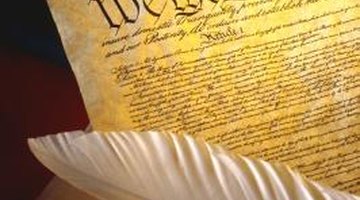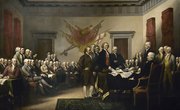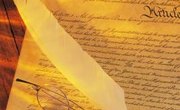In 1988, Congress passed Concurrent Resolution 331, which recognized the strong historical influence of the Iroquois Confederacy's governing documents and precepts on the content and language of the United States Constitution. The resolution noted, "The Confederation of the original thirteen colonies into one Republic was explicitly modeled upon the Iroquois Confederacy" and affirmed, "many of the [Iroquois'] democratic principles ... were incorporated into the Constitution itself." In their search for a style of government starkly different than that in most European nations, the Founding Fathers discovered an attractive model in the Iroquois Confederacy.
Iroquois Confederacy
Starting early in the second millenium, the Five (later Six) Nations of the Iroquois Confederacy successfully governed themselves through the Great Law of Peace. This document provided the basis of the Confederacy's democratic system of governance. It identified the procedures to establish representative legislative bodies, an executive entity and the laws and duties of the federated states as well as of the larger Confederacy. While some of the language reflected native American lore and imagery, the concepts were clearly aimed at the creation and operation of a large, federalist nation -- exactly the challenge faced by the United States' Founding Fathers.
The Albany Accords
As early colonial leaders began interacting more regularly with their Iroquois counterparts, the latter frequently offered the Great Law of Peace as an example upon which the new Americans might model their fledgling national government. This idea generally fell on deaf ears, but Benjamin Franklin recognized its potential and became a strong proponent of the Great Law's structure and contents. He invited an Iroquois leader to address the Albany Congress, a precursor to the Continental Congresses, on the Great Law and its relevance to the eventual nation-builders. A resultant document, the Albany Accords, contained Franklin's case for using the Great Law as the foundation for the constitution of the united colonies.
Common Precepts
At their cores, both documents are comprehensive "how-to" guides for successful democratic confederations. Both identify the structures of the federal government, describe its various branches and specify how they should interact. They prescribe the duties and responsibilities of each branch, as well as the government writ large. Chief among the latter are matters of common concern, such as taxation, war powers, creating a militia for the national defense, secession procedures and protecting basic human freedoms, such as the free practice of religious beliefs. Both documents also make clear distinctions between what the federal government should do and which tasks are the purview of the individual nations or states.
Constitution's Foundations
Beyond the broad concepts of democracy, how to structure a federal government, the rights of the individual and defining the public good, the Great Law of Peace and the U.S. Constitution are also similar in very specific details. Both outline methods of impeachment in great detail and discuss at length the need for maintaining a separation between civil society and the military. They also direct a periodic address to the nation's citizens by the chief executive. Both documents state explicitly the requirements for future amendments or changes to these guiding documents.
Related Articles
References
Writer Bio
As a national security analyst for the U.S. government, Molly Thompson wrote extensively for classified USG publications. Thompson established and runs a strategic analysis company, is a professional genealogist and participates in numerous community organizations.Thompson holds degrees from Wellesley and Georgetown in psychology, political science and international relations.











